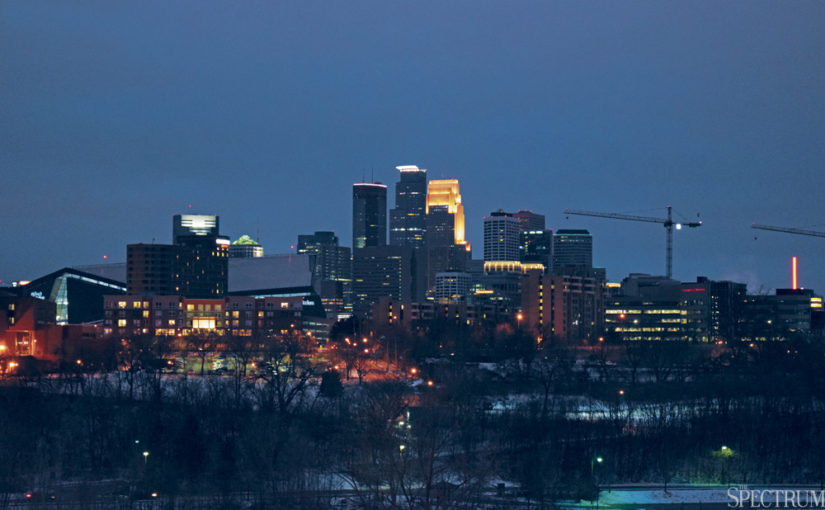On a clear day from a flat enough area, a looming goliath is visible from 20 miles away in the Twin Cities metropolitan area.
For those who come from rural towns of 10-to-60 people in the MinnDak region who have never seen the likes of the city, they just won’t get it. Words and photos can describe a location accurately, but both pale in comparison to actually being there at a location to experience it.
The roads leading to it, most notably Interstate 35-W and Interstate 94, provide a portrait-like perception of the concrete jungle embodying the 16th largest metropolitan area in the nation.
Seeing the Minneapolis Skyline has the same effect on most of the natives as Los Angeles and New York do for the main character in the latest rom-dramedy you’ve seen. It is a magical, awe-inspiring place, which leaves locals with an intrinsic feeling Minneapolis is where they belong.
The city serves as a key backdrop to two major sporting arenas in the area. Viewers of Minnesota Twins games can see the city guarding over the outdoor ballpark of Target Field, and viewers of the Minnesota Vikings can observe it through massive glass windows partially encompassing the newly built U.S. Bank Stadium.
A trio of buildings stand taller than the rest and should be known as the King, the Crown Jewel and the Gold Standard.
Instead, the IDS Center, the Capella Tower and the Wells Fargo Tower, respectively, reign over the Minneapolis metropolitan area with the loudest, most booming voice a silent and inanimate building can have.
The Wells Fargo Tower, in particular, deserves the spotlight because of its lights. The golden building shines bright at nighttime, beckoning visitors to the city like a porch light does to insects at night.
Within the city, the buildings remain equally intriguing. Keeling as far back as possible without falling just to see the top of a building next to you is a testament to the building power of mankind itself.
